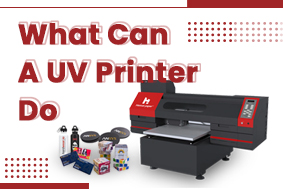Textiles and apparel fabrics are becoming more personalized and comfortable as people's clothing needs become more individual. Digital printing technology is becoming increasingly popular with the public due to its advantages such as high print accuracy, no need for plate making, flexible batch size, environmental protection and small footprint. However, how companies choose the right digital textile printer has become a new problem. This article discusses several factors that need to be considered when choosing a digital textile printer, hoping to give you some inspiration.
The choice of printing technology directly determines the choice of digital press type. For garment printing, the choice between transfer printing and direct inkjet printing plays a decisive role in the selection of the digital printing machine. Transfer printing, such as sublimation printing, require less investment and high printing accuracy, However, the fabrics that can be used are limited and mainly suitable for man-made fibers. The direct injection process generally requires fabric sizing, steaming, washing and other steps, which require a relatively large investment, but it has a wide range of fabrics and can be applied to polyester, nylon, cotton, linen, silk, wool, modal and other fabric types.
Fabric form refers to rolls, cut pieces, pullovers or ready-made garments. Companies can decide whether the digital printer they choose will print on rolls, cut pieces, sweaters or ready-made garments based on the type of fabric they mainly produce and process.
Companies can select equipment that can meet customers' printing accuracy based on different fabrics and customers' needs. Generally speaking, fabrics with relatively fine and smooth fibres, such as silk, chiffon, etc., have higher accuracy requirements; fabrics with relatively rough fibers, such as canvas, sweaters, etc., have lower accuracy requirements. When choosing the printing accuracy, it should be noted that higher accuracy is not better, as accuracy and efficiency are two opposing factors. The higher the accuracy requirement, the lower the efficiency.
There are generally three points to consider when choosing an ink:
The first point is the choice of ink color. According to the customer's needs and the type of fabric, you can choose four-color ink, six-color ink, eight-color ink, etc. In general, the more colors of the ink, the better the color saturation and color effect of the print, which also directly determines the ink type of the printing machine.
The second point is the choice of ink type. Printing inks generally include reactive inks, acid inks, disperse inks, varnish inks, etc. The type of ink should generally be selected according to the material of the fabric. Choose an ink that has good coloring and color performance for the fabric.
The third point is the choice of ink brand and model. Generally, the ink is designed for the brand and model of the nozzle. When choosing an ink, you should make sure that it is suitable for the nozzle model of the printer. In addition, the smoothness, vividness, color fixation, environmental friendliness, etc. of the ink are all aspects that should be considered when choosing an ink.
As the most important component and main consumable of a digital printing machine, the nozzle plays a decisive role in the choice of a digital printing machine. The type of nozzle determines the printing accuracy, ink jet quantity, printing speed, production cost, etc. The selection of nozzles should take into account the type of fabric to be printed, cost estimation, production efficiency requirements, and other factors. As the main consumable, the replacement cost and durability of the nozzle should also be fully considered.
When choosing a digital printing press, you should focus on the technical capabilities and sustainable development capabilities of the manufacturer, which are mainly reflected in the following:
(1) What is the R&D strength of the manufacturer? The manufacturer's R&D strength determines the market competitiveness of the manufacturer's products, whether the equipment used can keep up with the times, whether it can be upgraded, and whether a new generation of products can be produced to meet the requirements of future development.
(2) The level of support provided by the manufacturer throughout the process. In particular, the direct injection digital printing process is relatively complex. It consists of fabric sizing, printing and drying, steaming, washing, finishing and other links. Any control error in any of these links will affect the quality of the final product.
Therefore, it is very important to get technical support from the manufacturer for the whole process, which is especially reflected in the cooperation between the slurry and the fabric, the cooperation between the ink, the machine and the nozzle, the cooperation between steaming, washing, finishing and printing, etc.

The following factors should also be considered before making the final choice of digital textile printing equipment:
(1) Printing cost. This is a comprehensive calculation of equipment depreciation, ink consumption, nozzle loss, factory rent, water and electricity bills, labor costs, etc. to calculate the total cost of printing finished products per square meter.
(2) Equipment footprint and required environmental conditions. Measure the floor space required for computer equipment and whether the temperature and humidity requirements of the environment are met.
(3) Water, electricity, gas and other requirements. It is necessary to understand the specific requirements of power, voltage, air pressure, etc. of the equipment.
The above points are the factors to consider when selecting a textile digital printing machine. When choosing a digital printing machine, you must consider the above factors in detail and make a choice based on your actual situation and needs.
The basic principle of choosing a digital printing machine - don't choose the most expensive one, just choose the one that suits you best.
 Choose sublimation paper? Focus on quality over price
Choose sublimation paper? Focus on quality over price
 2024 Apparel Decoration Industry Trends
2024 Apparel Decoration Industry Trends
 What are the features of digital textile printing equipment
What are the features of digital textile printing equipment
 What can a UV printer do?
What can a UV printer do?